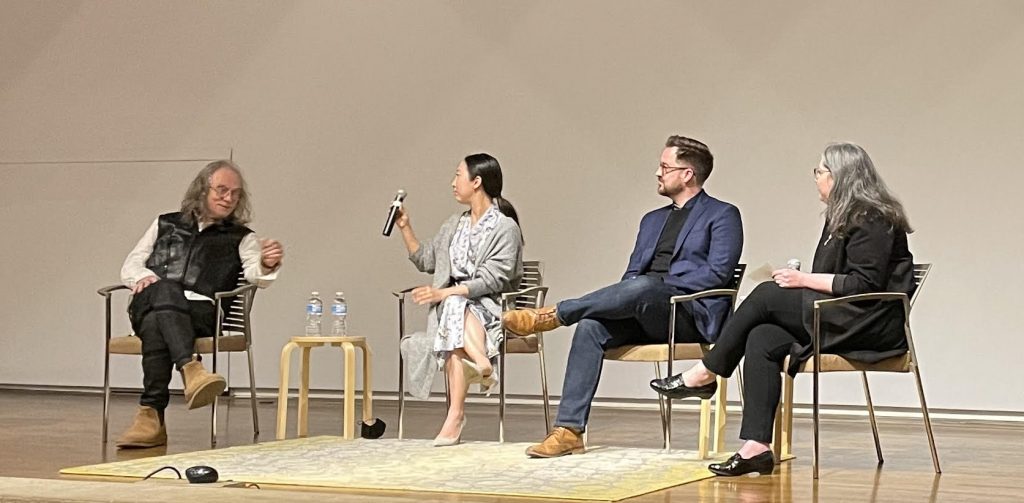I submitted this rebuttal to an article in Clay & Milk on May 16, 2017 and am saving it here on my blog for archival.
Sometimes you set aside your vulnerability just to curtail chances of preventing harm. As a guy who frequently sees the stories about a lack of women at the table in venture capital, I too wonder why. As a state comprising of a fairly even male to female ratio of workers, it is puzzling to see why more women aren’t investing as VCs and angels, especially since many Fintech employees in Des Moines’ are women.
The recent Clay & Milk article, “Making the case for female-focused investment firms in the Midwest”, highlights the core problems as there being simply too few women partners at venture funds and too few venture funded companies have women CEOs.
More investment groups focused on women-led businesses and women-specific groups for investors and strong communities were two of the solutions highlighted. I’m not sure that would work to solve the original issues.
A brief history
I was exposed to many of our city (and state’s) startups during my time at StartupCity Des Moines. The core problem of access to capital led several of us to the table to discuss options, one of which was simply a directory of capital resources. The directory’s limited success led us back to the table and formation of a Des Moines based Plains Angels investment network. At its onset its membership saw as many as 125 members, 14 of which were women.
Progress
The network grew and, over its 4 year history has made 19 investments from 400 applications. As I reviewed applications, I looked for the business growth characteristics, capabilities of its leadership team, and the financials. Not once did the demographics – men, women, foreign-born, native-born, black, white, Asian or any other diversity factor come into play because they weren’t relevant to the investment. As I look back, four were led by women – a datum I know only because I went back to look.
I believe our city is different from the larger cities of the coasts and elsewhere in the world. Either due to size or relative economic homogeneity, we have been lucky to operate more as a melting pot than larger cities like Chicago, New York, and London (England). We’ve largely avoided the separation inherent in a little-India, Chinatown, little Italy or mini Mexico here. Our city’s diversity is distributed throughout Des Moines and suburbs.
As evidenced by our own citizens and others, we are a prosperous and growing community.
Our strength, therefore, is not in division but unity.
One of the basic tenets of sound investment philosophy is diversification. Any investment in a vacuum is an island in itself. Removal of bias is necessary to make sound investment decisions. The removal of bias happens naturally during investment discussions amongst a diverse group at the table. Investing, as a discipline, is agnostic to gender, geography, culture, religion and age.
Since the recent creation of women-only investment groups, I have seen Plains Angels membership of women fall. The group that once had up to 14 women in the room, 3 extremely regular, now rarely sees one. And without diversity of opinion over time, I can see the group dwindle further; a receding tide lowering all boats.
I strongly urge my fellow female angel investors, government sponsors and non-government organizations to collaborate not separate. We have wonderful examples of cities around the world that have struggled with these battles when it was too late – cities such as New York, Sydney and London built up cultural enclaves as the ethnic groups populating them supported from within, propped up new entrants, and removed the early struggles of language, economics and religion. Clustering, which once was part defense and part survival, now displays indelible borders.
As alluded to by the original article, women engage in deeper understanding of an investment. It also states that despite deep professional expertise, women aren’t yet used to making such angel investment decisions. Assuming both to be true, wouldn’t it be beneficial to engage in dialogue across genders, geographies and experiences? Better investment decisions can be made when men and women come together to harmonize their diverse ways of thinking, acting, researching, and evaluating. The silos being constructed in our community aren’t the way to achieve harmony.
If an end goal is more women partners at venture funds, let’s not begin by separating men from women.
Segregation doesn’t work as a mechanism to resolve lack of diversity. It makes it worse.







